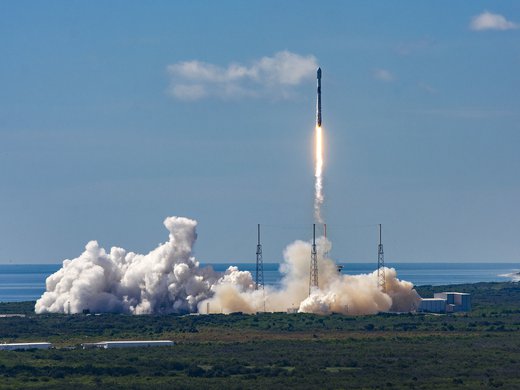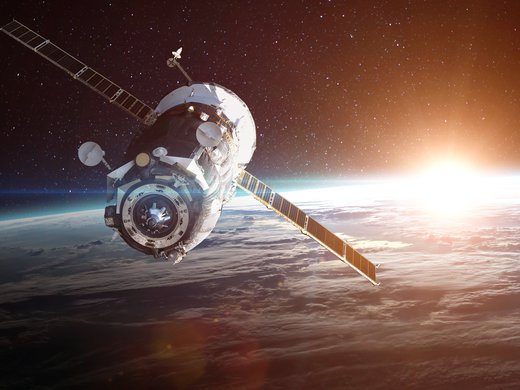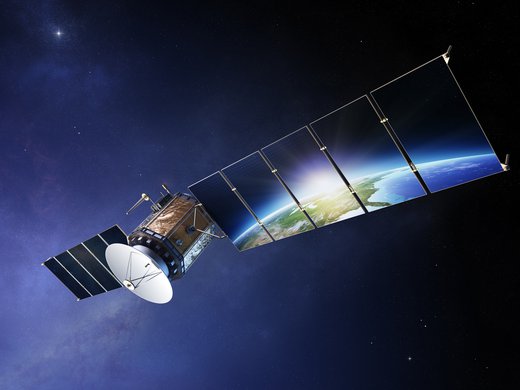The Artemis Lunar Exploration Program, led by the National Aeronautics and Space Administration (NASA), aims to land the first woman and the next man on the Moon by 2024. NASA sees Artemis as key to the success of its Moon-to-Mars exploration approach. In December 2020, NASA and the Canadian Space Agency (CSA) finalized an agreement on Canada’s participation in the Artemis program, which would make Canada only the second country, after the United States, to have its astronauts in deep space. According to NASA, they are working with the global science community to study different regions of the Moon as well as to find and use resources in space to further their mission, known as in situ resource use (ISRU). However, at least 14 national space agencies have identified ISRU as a needed capability for long-duration missions; it is apt to remember that self-interest in securing access to natural resources is at the root of many terrestrial disputes. According to former UN Secretary-General Ban Ki-moon “since 1990, at least 18 violent conflicts have been fuelled by the exploitation of natural resources such as timber, minerals, oil and gas. Sometimes this is caused by environmental damage and the marginalization of local populations who fail to benefit economically from natural resource exploitation.” Taken further, as the Artemis program seeks to pave the way for a “new and sustainable lunar economy,” commercial exploitation is foreseeable.
During the Cold War, commercial exploitation of natural resources of outer space was beyond the immediate concerns of United Nations negotiators of the constitution of Outer Space (known as the Outer Space Treaty of 1967). While the treaty set forth that space and celestial bodies are free for exploration and use by all states in conformity with international law, article 2 of the Outer Space Treaty declares that “outer space, including the Moon and other celestial bodies, is not subject to national appropriation by claim of sovereignty, by means of use or occupation, or by any other means.” The term “national appropriation” is not defined in the treaty.
Without clarity on the legal status of these resources, one cannot disregard the possibility that future conflict could arise from competition for space resources.
This continued use and possible exploitation of resources was envisioned under the Moon Agreement of 1979 — which has not been ratified by any of the major spacefaring countries. The agreement calls for the establishment of an international regime “to govern the exploitation of the natural resources of the moon as such exploitation is about to become feasible.” The controversy is that article 11 of the Moon Agreement provides that the moon and its natural resources shall be the “common heritage of mankind.” This common heritage of mankind concept, the lack of a clear definition of what it entails and the fact that it might lead to mandatory benefit sharing, is perceived by many to be the most significant obstacle toward achieving widespread support for the Moon Agreement within the international community.
Without clarity on the legal status of these resources, one cannot disregard the possibility that future conflict could arise from competition for space resources.
The United Nations, through the Committee on the Peaceful Uses of Outer Space (COPUOS), has been successful at maintaining a certain overview of space activities. One of its two subcommittees (the Legal Subcommittee) has become less effective in recent decades with respect to the progressive development of law (mainly due to political gridlocking), the requirement for consensus in decision making and the variety of interests competing for priority on their agenda. Despite this, at its fifty-eighth session (held from April 1–12, 2019), the Legal Subcommittee agreed to convene “scheduled informal consultations” on the issue of the exploration, exploitation and utilization of space resources. The aim of those consultations is to have a “broad and inclusive exchange of views on the future deliberations concerning the exploration, exploitation and utilization of space resources, including the possible establishment of a working group under the relevant agenda item.” Postponed due to the outbreak of COVID-19, the scheduled informal discussions will take place during the next session of the Legal Subcommittee in 2021.
At those discussions, the US National Space Policy will be front and centre. Released on December 9, 2020, the policy clearly states that “the United States will pursue the extraction and utilization of space resources in compliance with applicable law [emphasis mine], recognizing those resources as critical for sustainable exploration, scientific discovery, and commercial operations.” The policy also highlights that “as established in international law, outer space, including the Moon and other celestial bodies, is not subject to national appropriation by claim of sovereignty, by means of use or occupation, or by any other means.” Alongside this statement, article II of the Outer Space Treaty is cited; however, it is not internationally accepted that the United States’ assertion of its right to pursue space resources is a legal right or in compliance with that provision of the Outer Space Treaty. The United States has taken an expansive approach using multiple instruments to ensure its own certainty about its interpretation of international law and is working hard to sell its vision to the international community.
The CSA is currently consulting Canadians on a framework for future space exploration activities. Meanwhile, vocal opponents are urging Canada not to endorse the US approach.
Congressional Action
The United States adopted the Commercial Space Launch Competitiveness Act in 2015, which includes Title IV — Space Resource Exploration and Utilization. This title contains provisions that recognize the property rights of US citizens in space resources derived from celestial bodies. Section 402 states that “a United States citizen engaged in commercial recovery of an asteroid resource or a space resource under this chapter shall be entitled to any asteroid resource or space resource obtained, including to possess, own, transport, use, and sell the asteroid resource or space resource obtained in accordance with applicable law, including the international obligations of the United States.”
For the first time, this act makes provision for private property rights in space natural resources. While some applaud this legislative action designed to stimulate exploration and exploitation of space natural resources, others believe that the act is contrary to the provisions of article II of the Outer Space Treaty. The term “national appropriation,” however, is not defined in the treaty, making it possible to argue that the extraction, or even the sale of space resources is not prohibited and is therefore already permitted. To defuse the criticism of possible appropriation by the United States, the act contains a disclaimer to the effect that “by the enactment of this Act, the United States does not thereby assert sovereignty or sovereign or exclusive rights or jurisdiction over, or the ownership of, any celestial body.”
It remains to be seen if such renunciation will be sufficient to satisfy those who believe that this US legislation constitutes an appropriation of celestial bodies. The 2016 session of the COPUOS witnessed a negative reaction to the act, but there is a slow-emerging trend toward this interpretation as evidenced by Luxembourg, the United Arab Emirates and Japan enacting similar laws.
Executive Action
On April 6, 2020, President Donald Trump issued an executive order on “Encouraging International Support for the Recovery and Use of Space Resources.” It cites title IV of the US Commercial Space Launch Competitiveness Act as the authoritative basis for the executive order but goes even further. The key points are that the United States:
- supports the right for commercial “recovery” and “use” of space resources;
- is not a party to the Moon Agreement, and rejects the Moon Agreement as a basis for any space resources governance regime;
- rejects the notion that the Moon Agreement is reflective or expresses customary international law;
- repudiates the notion that space is a “commons;” and
- will seek international support for the “exploitation” and “use” of space resources.
So, the executive order largely restates existing US policy and law but goes further, and is significant because a debatable legal position was clarified in an executive order. It could represent both state practice and evidence of opinio juris (the belief that an action was taken out of legal obligation), which has significance for any developing customary international law regarding space resources. (Customary law is important because it would apply to all states, even without the ratifying of a legal instrument.) Interestingly, the United States introduced the common heritage nomenclature into the Moon Agreement.
The executive order also directed the State Department to lead interagency efforts to encourage other countries to adopt the US position that both public and private organizations have the right to use space resources. The order called for doing so through a series of bilateral or multilateral agreements.
Bilateral Agreements
The Artemis Accords were therefore proposed in May 2020 and elaborated further in October 2020 by NASA as a series of bilateral executive political agreements between the United States and other countries that want to cooperate on the Artemis program. The memorandums of understanding, which have now been signed by nine states — Australia, Canada, Italy, Japan, Luxembourg, Ukraine, the United Arab Emirates, the United Kingdom and the United States — set a normative framework based on the Outer Space Treaty that covers all kinds of activities involved with lunar exploration. The rights and duties expressed therein take the form of expectations rather than legally enforceable provisions. NASA highlights that the accords follow the Outer Space Treaty, and they do in regards to the sections on “peaceful purposes,” emergency assistance, registration of objects, transparency and release of scientific data. However, the provision in reference to space resources is worth illuminating, stating in section 10(2) that “the Signatories emphasize that the extraction and utilization of space resources, including any recovery from the surface or subsurface of the Moon, Mars, comets, or asteroids, should be executed in a manner that complies with the Outer Space Treaty and in support of safe and sustainable space activities. The Signatories affirm that the extraction of space resources does not inherently constitute national appropriation under Article II of the Outer Space Treaty, and that contracts and other legal instruments relating to space resources should be consistent with that Treaty.”
Other significant innovations in the Artemis Accords that go beyond the Outer Space Treaty are sections on interoperability, protecting lunar heritage, orbital debris and spacecraft disposal, and the controversial section 11 on “deconfliction of space activities,” which calls for “safety zones” around sites of activity, and could itself amount to appropriation because it will involve some measure of exclusion and alienation.
Some contend that the benefit of the accords is that they are flexible and can respond quickly to change, unlike the treaty regime. However, others have argued that it is odd to see NASA attempting to define proper behaviour in space on its own and that NASA’s action as a “diplomatic surrogate for the United Nations is a significant — and potentially harmful — milestone in the commercialization of outer space.” China and Russia are particularly notable absences from the accords, and other notable absences, such as Germany, France and India, are unsure of the merits of joining. While China has been largely silent, Russia has declared that the Artemis Accords are too US-centric, despite its discussions with the United States about participation in the Lunar Gateway, the orbital outpost of the Artemis program.
Significant efforts are expended by US officials to communicate that US-led governance instruments are not seen as replacing international instruments, with section 10(4) of the accords setting forth that “the Signatories intend to use their experience under the Accords to contribute to multilateral efforts to further develop international practices and rules applicable to the extraction and utilization of space resources, including through ongoing efforts at the COPUOS.”
Since it signed the Artemis Accords in October, Canada has been seeking views, through the CSA, from industry, academia, non-governmental groups and the general public to “expand, refine, and solidify this framework to help ensure safe and sustainable [emphasis in original] space exploration for decades to come.” The consultation process is set to conclude by March 31, 2021.
Contracting
Coming at this from all angles, the latest innovation from NASA is in contracting and public-private partnership instruments, which has the effect of norm setting through private sector activity. In September, NASA announced it would buy lunar soil obtained by commercial landers as a token purchase (on the order of $25,000 for a few hundred grams) intended to set a precedent. Local and international companies selected for space resources contracts will collect a small amount of lunar soil from any location on the Moon’s surface and provide imagery to NASA of the collected material, along with data that identifies the collection location. After NASA receives the information, the company will conduct an in-place transfer of ownership of the lunar regolith to the agency, completing the commercial transaction; 80 percent of the payment is to be made on delivery. The payment is a nominal amount, but the transfer of ownership and the act of selling something collected on the Moon sets a precedent that an in-orbit transaction does not amount to appropriation. After ownership transfer, the collected material becomes the sole property of NASA for the agency’s use under the Artemis program. On December 3, NASA announced the companies it has selected to collect these lunar resources. Twenty-two proposals were received but only eight were eligible, and of these four bids — Lunar Outpost, from Golden, Colorado; ispace Japan; ispace Europe; and Masten Space Systems, from Mojave, California — were successful, with contract awards ranging from $1 to $15,000. The funding is so low because NASA is paying solely for the collected material, without footing the bill for any development costs.
While the countries that these companies are registered in are all Artemis Accord signatories, it begs the question: If they had not been nationals of signatories, how would such action have bound their countries? After all, article VI of the Outer Space Treaty states that “States Parties to the Treaty shall bear international responsibility for national activities in outer space, including the Moon and other celestial bodies, whether such activities are carried on by governmental agencies or by non-governmental entities, and for assuring that national activities are carried out in conformity with the provisions set forth in the present Treaty. The activities of non-governmental entities in outer space, including the Moon and other celestial bodies, shall require authorization and continuing supervision by the appropriate State Party to the Treaty.”
This raises a number of significant governance questions. To start: How can this be done, if the contract is between NASA and the commercial actor? How will NASA verify a contract has been fulfilled by photos, and how will they ensure the collected material remains in their possession after the images have been taken? And how will the lunar resources be managed, considering sustainability and stewardship?
One non-profit organization has launched a project to answer some of these questions. On the heels of the NASA announcement of the awards, the California-based Open Lunar Foundation has established a perpetual purpose lunar resources trust they call “Breaking Ground,” intended to “steward and demonstrate formal and effective institutional management of lunar resources between different stakeholders.” The trust will be governed by a committee that the foundation says will “operationalize efforts including the purchasing of lunar regolith” — the fine, powdery soil on the surface of the Moon — “and stewarding those resources, facilitating participatory consultative processes to involve many stakeholders in determining, identifying and advocating for clear new resource management regimes as a result of these efforts.” Further, “the trust seeks to make multiple purchases which may each explore different management treatments.” While the trust is a laudable initiative because of its focus on stewardship, it’s worth noting that this initiative is encouraged by the United States as a further buttress for their intentions and does nothing to address the main challenge to the US position on space resource exploitation.
Clearly, the United States has set in motion a series of initiatives that have moved the dialogue along at a pace that supersedes that of the multilateral process.
That main challenge is aptly expressed in a recent article published in Science by University of British Columbia professors Aaron Boley and Michael Byers, who argue that promoting national regulation of space mining rather than multilateral governance risks a race to the bottom and that because acquiescence is often treated as consent in international law, even NASA’s purchase of lunar soil would, if not protested by other nations, strengthen the US interpretation. They argue that “NASA’s actions must be seen for what they are — a concerted, strategic effort to redirect international space co-operation in favor of short-term U.S. commercial interests, with little regard for the risks involved.” Boley and Byers have continued their advocacy and led an effort in August 2020 to ask the United Nations to draft an international treaty that would set uniform rules. They sent a letter asking UN General Assembly president Tijjani Muhammad-Bande to seek a resolution that would initiate multilateral negotiations; it was endorsed by more than 140 scientists, former politicians and diplomats.
As Vladimir Kopal writes “it is not possible to accept that the exploitation of space resources should be left only to national regulations of those countries, which would be able to conduct such activities. (…) In the development of space law as a whole, the establishment of an appropriate legal regime to govern commercial activities in the exploitation of space resources should be affected on both tracks, international and national.”
Conclusion
It is unclear what should be done, as it seems space law making is at a crossroads. Clearly, the United States has set in motion a series of initiatives that have moved the dialogue along at a pace that supersedes that of the multilateral process. But, Finn Robinsen’s prediction that “the future of space governance is increasingly less international and characterised by coercion, coalition building and the pursuit of hegemony,” need not be so.
With a new administration as of on January 20, 2021, it seems very unlikely that the 2024 politically motivated goal set for the Artemis Moon landing will be reached, so moving at the speed of light is no longer necessary. As much as it may chafe the spirit of innovation, time must be taken so that diverging views are heard and stakeholders are consulted to determine a multilateral approach, while still ensuring that the momentum gathered from the preceding five years of action is not wasted.
To take action is also a security imperative. Leigh Foster and Namrata Goswami warn that state behaviour in other areas beyond national jurisdiction is a cause for concern and shows us what could happen if states continue with a first-come, first-served “scramble for the skies” mentality rather than see space as a global commons for humanity.
Prioritizing international space law making in the appropriate fora and taking an executive approach could lead us to a proliferation of national regimes that are in the common interest of humankind.
As stakeholders in the evolving global space governance regime, we have two tasks. First, we must protect outer space from claims of sovereignty and unequitable exploitation by individual states and their nationals. Second, we need to protect the interests of future generations in these resources. To be successful in either task, we must first create a sensible working relationship between international and national laws.




